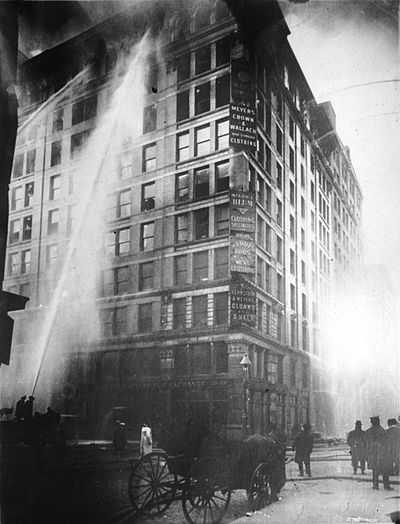Berylliosis
| Berylliosis | |
|---|---|
| Classification and external resources | |
| ICD-10 | J63.2 |
| ICD-9 | 503 |
| eMedicine | med/222 |
Berylliosis, or chronic beryllium disease (CBD), is a chronic allergic-type lung response and chronic lung disease caused by exposure to beryllium and its compounds, a form of beryllium poisoning. As an occupational lung disease, it is most classically associated with aerospace manufacturing, beryllium mining or manufacturing of fluorescent light bulbs (which once contained beryllium compounds in their internal phosphor coating).[1][2]
The condition is incurable, but symptoms can be treated.[3]
Symptoms
With single or prolonged exposure by inhalation, the lungs become hypersensitive to beryllium causing the development of small inflammatory nodules, called granulomas. Of note, the authors of a 2006 study suggested that beryllium inhalation was not the only form of exposure and perhaps skin exposure was also a cause, as they found that a reduction in beryllium inhalation did not result in a reduction in CBD or beryllium sensitization.[4]
Granulomas are seen in other chronic diseases, such as tuberculosis and sarcoidosis, and it can occasionally be hard to distinguish berylliosis from these disorders.
Ultimately, this process leads to restrictive lung disease, a decreased diffusion capacity.
Clinically patients experience cough and shortness of breath. Other symptoms include chest pain, joint aches, weight loss and fever.
Rarely, one can get granulomas in other organs including the liver.
The onset of symptoms can range from weeks up to tens of years from the initial exposure. In some individuals a single exposure can cause berylliosis.
Diagnosis
The differential diagnosis for berylliosis includes:[5]
- Sarcoidosis
- Granulomatous lung diseases
- Tuberculosis
- Fungal infections
- Granulomatosis with polyangiitis
- Idiopathic pulmonary fibrosis
- Hypersensitivity pneumonitis
- Asthma
Of these possibilities, berylliosis presents most similarly to sarcoidosis. Some studies suggest that up to 6% of all cases of sarcoidosis are actually berylliosis.[6]
History as occupational disease
Cases of bronchitis and pneumonia-like symptoms were reported in Germany and Russia in the 1930s, among workers mining and refining beryllium. By 1946, a cluster of cases associated with fluorescent lamp manufacturers were apparent in the United States, and the lamp industry stopped using beryllium in 1949. The level of reaction of individuals varies greatly, with some not developing symptoms until years after exposure within industrial plants, but other workers only exposed to traces of dust became affected as well. A study found 1% of people living within 3/4 of a mile of a beryllium plant in Lorain, Ohio, had berylliosis after exposure to concentrations estimated to be less than 1 milligram per cubic metre of air. In the United States the Beryllium Case Registry contained 900 records, early cases relating to extraction and fluorescent lamp manufacture, later ones coming from the aerospace, ceramics and metallurgical industries. [7][8]
References
- ↑ U.S. Army Center for Health Promotion and Preventive Medicine. "USACHPPM: Just the Facts: Beryllium Exposure & Berylliosis". Retrieved 2013-11-10.
- ↑ General Electric Fluorescent Lamps TP 111R, Dec. 1978, says on pg. 23 that since 1949 GE lamps used relatively inert phosphates found to be safe in ordinary handling of either the intact or broken lamp.
- ↑ Dweik, Raed A (2008-11-19). "Berylliosis: Treatment & Medication". Medscape. Retrieved 2009-08-21.
- ↑ Day, GA; Stefaniak, AB; Weston, A; Tinkle, SS (February 2006). "Beryllium exposure: dermal and immunological considerations.". International archives of occupational and environmental health 79 (2): 161–4. doi:10.1007/s00420-005-0024-0. PMID 16231190.
- ↑ Newman, LS (March 1995). "Beryllium disease and sarcoidosis: clinical and laboratory links.". Sarcoidosis 12 (1): 7–19. PMID 7617981.
- ↑ Rossman, MD; Kreider, ME (June 2003). "Is chronic beryllium disease sarcoidosis of known etiology?". Sarcoidosis, vasculitis, and diffuse lung diseases : official journal of WASOG / World Association of Sarcoidosis and Other Granulomatous Disorders 20 (2): 104–9. PMID 12870719.
- ↑ David Geraint James, Alimuddin Zumla, The granulomatous disorders, Cambridge University Press, 1999, ISBN 0-521-59221-6, pages 336-337
- ↑ Brown University Medical School. "Berylliosis". Retrieved 2012-08-20.
External links
- ATSDR Case Studies in Environmental Medicine: Beryllium Toxicity U.S. Department of Health and Human Services
- CDC - Research on Beryllium Sensitization and Chronic Beryllium Disease - NIOSH Workplace Safety and Health Topic
- Beryllium Network
- Health-cares.net
- Instant insight from the Royal Society of Chemistry examining the molecular basis of chronic beryllium disease
- Rosner, David; Markowitz, Gerald E. (February 1987). "Ch. 7: Salem Sarcoid:The Origins of Beryllium Disease". Dying for work: workers' safety and health in twentieth-century America. Indiana University Press. pp. 103–. ISBN 978-0-253-31825-1.
| ||||||||||||||||||||||||||||||||||||||||||||||||||||||||||||||||||||||||||||||||||||
| |||||||||||||||||||||||||||||||||
